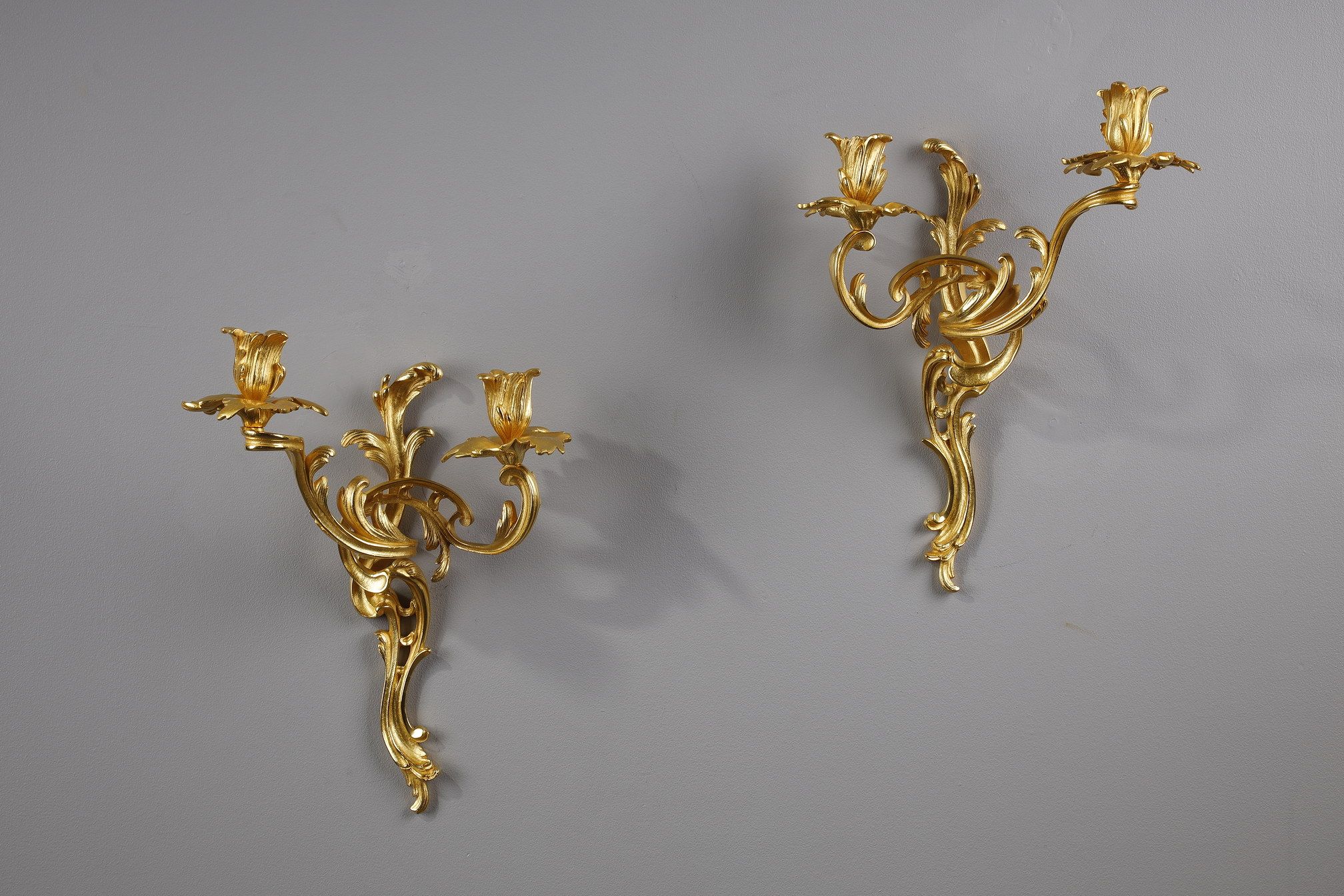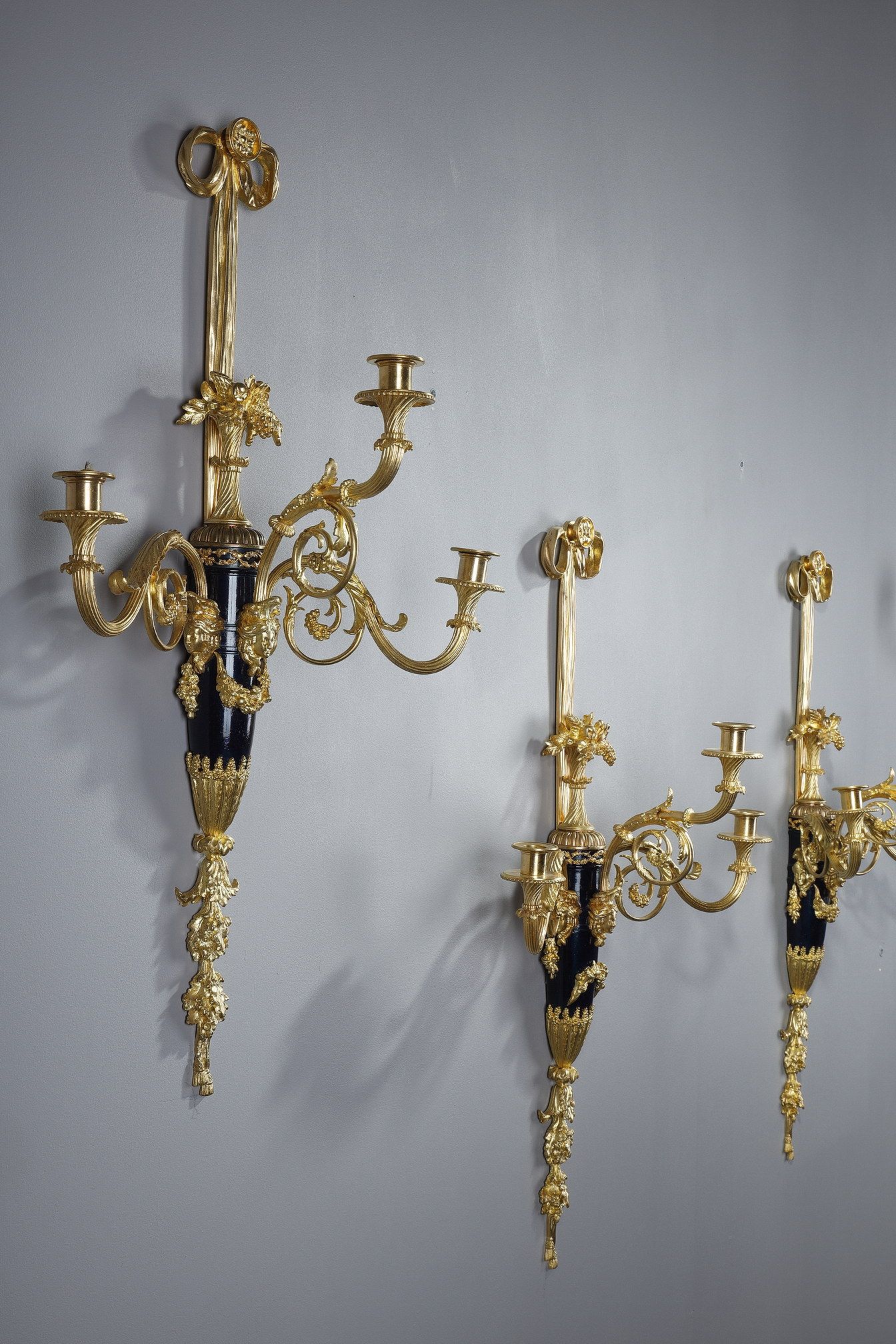Chandeliers
The chandelier is an object of furnishing, created to capture light and enhance the brightness of an interior. As early as the Middle Ages, they were made of wood and fitted with candles. From the Renaissance onwards, hanging lamps were made of metal and diversified in shape. At the same time, they grew in size and became a symbol of luxury and wealth.
In 17th-century Versailles, chandeliers were designed to dazzle Louis XIV's guests, particularly in the Galerie des Glaces, thanks to the reflections of light and the richness and quality of the crystals. Noble materials such as crystal embellished these sumptuous decorative objects for decades. Pendants, rosettes, prisms, pendants and pearls in cut crystal create rich decorations, supported by gilded mounts.
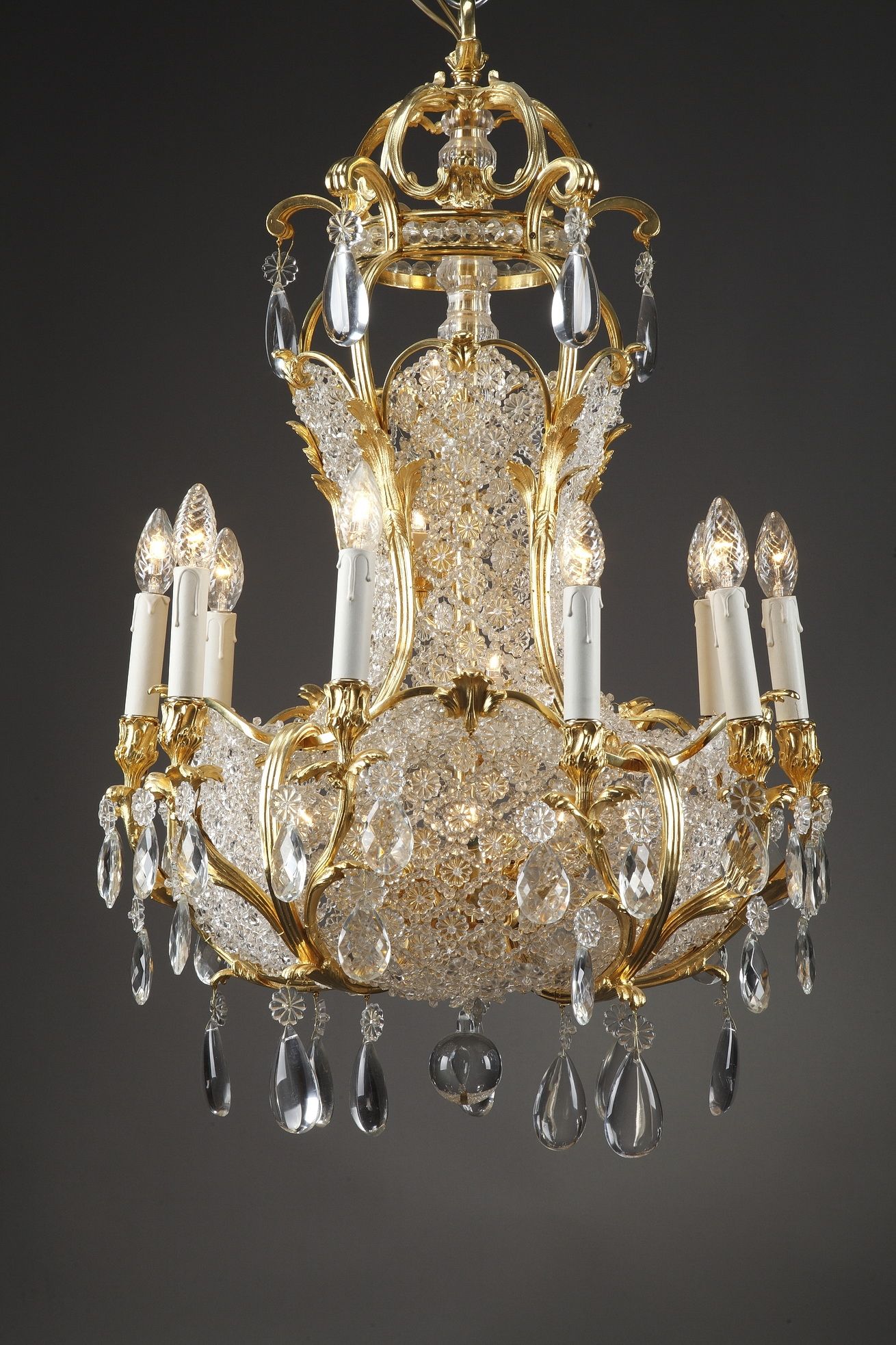 Crystal and gilt bronze basket chandelier
Crystal and gilt bronze basket chandelier
In the 19th century, chandeliers appeared where candles were replaced by gas lighting. This was a real revolution, as it meant that the chandelier no longer had to be lowered to light it. At the end of the 19th century, candles were definitively replaced by light bulbs thanks to the appearance of electricity.
The light fixture is a central object of decoration, whose forms and decorations evolve over time. If the Louis XVI period and the beginning of the 19th century were attached to the chandeliers "corbeilles" and models with symmetrical and fluid forms, under Napoleon III we find the exuberance of the rocaille style, the Louis XIV - Mazarin models in particular, and Louis XVI. The latter was particularly appreciated by the Empress Eugénie. Porcelain, alabaster, opaline, Bohemian crystal and Baccarat crystal were used with great ingenuity by the craftsmen of the time, who produced sumptuous and sometimes surprising models.
Castle chandeliers
Chandeliers were first used in castles and reception rooms in prestigious buildings such as theaters, opera houses and administrative buildings. Their monumental size corresponds to the high ceilings that characterize old buildings. Some models feature numerous arms of light and opulent decoration. For example, our 10-light corbeille chandelier is richly adorned with a curtain of crystals: prisms, plaquettes, rosettes and pendants form a delicate latticework.
 Large lantern at Château de Leoube in Bromes
Large lantern at Château de Leoube in Bromes
In addition to chandeliers, ovoid or polylobed lanterns adorn entrance halls. Galerie Atena has a Napoleon III-period model from the Château Léoube in Bormes-les-Mimosa, Var. This large ormolu vestibule lantern, inspired by the Louis XV style, has its original curved glass. Adorned with flower baskets and garlands of flowers, this hanging lantern shines with five lights.
Candleholders and candlesticks
The candlestick is a more intimate object. Small in size, it was used in every room of the house, right up to the bedroom. As we saw earlier, throughout the 18th and early 19th centuries, candlelight was an integral part of furnishing. Candleholders, which could be easily carried and moved, were placed on bedside tables, dining room tables, living room fireplaces or on small pieces of furniture made especially for them. They can also be used as toilet or writing accessories.
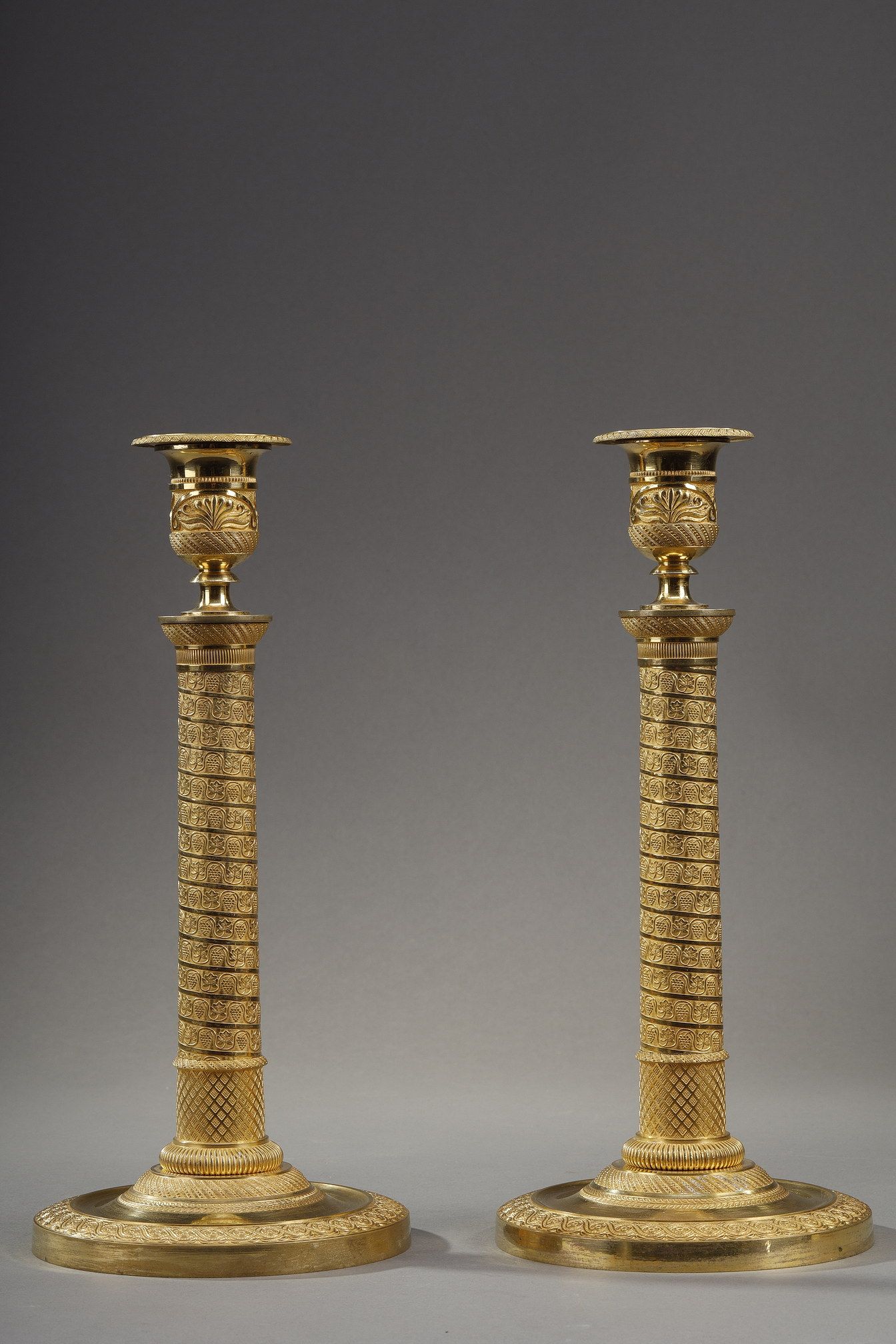 Pair of candlesticks, Restoration period
Pair of candlesticks, Restoration period
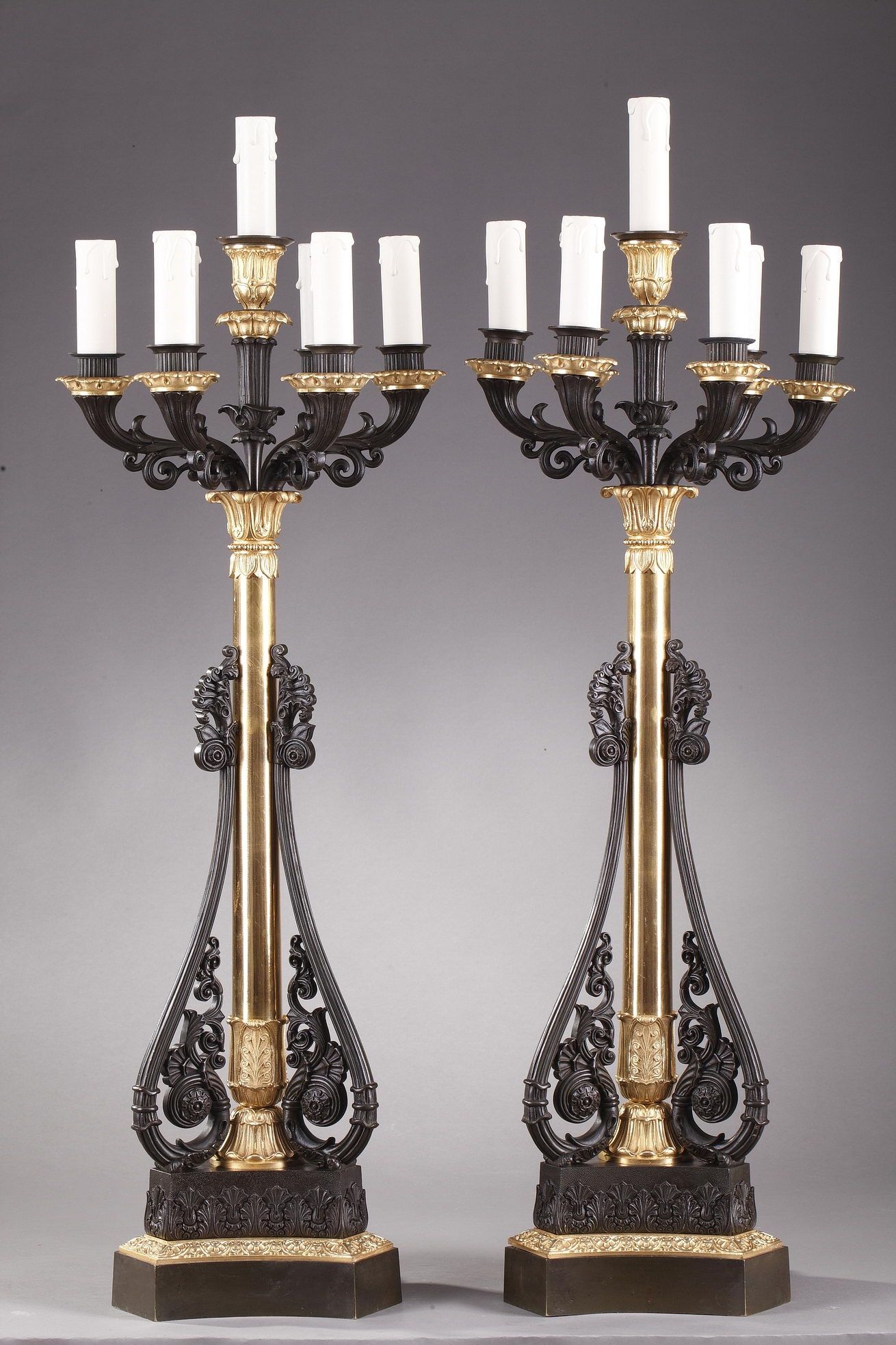 Pair of Louis Philippe 7-light candelabra
Pair of Louis Philippe 7-light candelabra
The candlestick is composed of a more or less high shaft resting on a foot and finished at the top by a spigot sometimes completed by a fixed or mobile wick. The bobeche may have one or two small openings on the side to allow the rest of the candle to be extracted.
Candlesticks are based on this structure, but are more imposing in size and decoration. Like candlesticks, they're an integral part of interior design, lending unmistakable splendor to family meals, parties and ceremonies. With several arms of light, they are decorated with floral or animal motifs . Some exceptional models, like our pair of putti candelabra, are adorned with allegorical or mythological figures. Others take the form of a vase from which flowers spring to form the arms of light.
Pair of candelabras signed Eugène Hazart
There are many different types of candlesticks whose names reflect their use: table candlesticks, screen candlesticks, travel candlesticks, game table candlesticks... Candlesticks are moved less often and can reach impressive dimensions. In the second half of the 19th century, metal or porcelain vases were diverted from their initial use and mounted as lamps. We have several models, including a beautiful pair of vases in the "famille rose" style, probably made by the Samson factory, and a pair of Art Nouveau lamps "aux nymphes".
The materials used to manufacture these fixtures are extremely varied: gilded bronze, patinated bronze, brass, porcelain, marble, gold, silver, opal glass, crystal and wood.
See the candlesticks collection
Sconces
Sconces are part of the history of lighting and have undergone the same evolution of shapes, designs and lighting systems.They can be defined as chandeliers applied to walls. The use of wall-mounted chandeliers began to spread in the 17th century. One of the reasons was aesthetic: to combine complementary sources with the main source of light in a room in order to amplify the brightness.
 Pair of crystal sconces on mirror background
Pair of crystal sconces on mirror background
Louis XV-style gilt bronze and chased wall lamp
Suite of four Louis XVI sconces
Made of wood, bronze or glass, the shapes of sconces are very varied: simple and symmetrical at the beginning of the century, they adopted the fantasies of the Louis XV style under Napoleon III. Galerie Atena has several models of Rocaille sconces in wood and gilt bronze, including a pair from the Louis XV period.



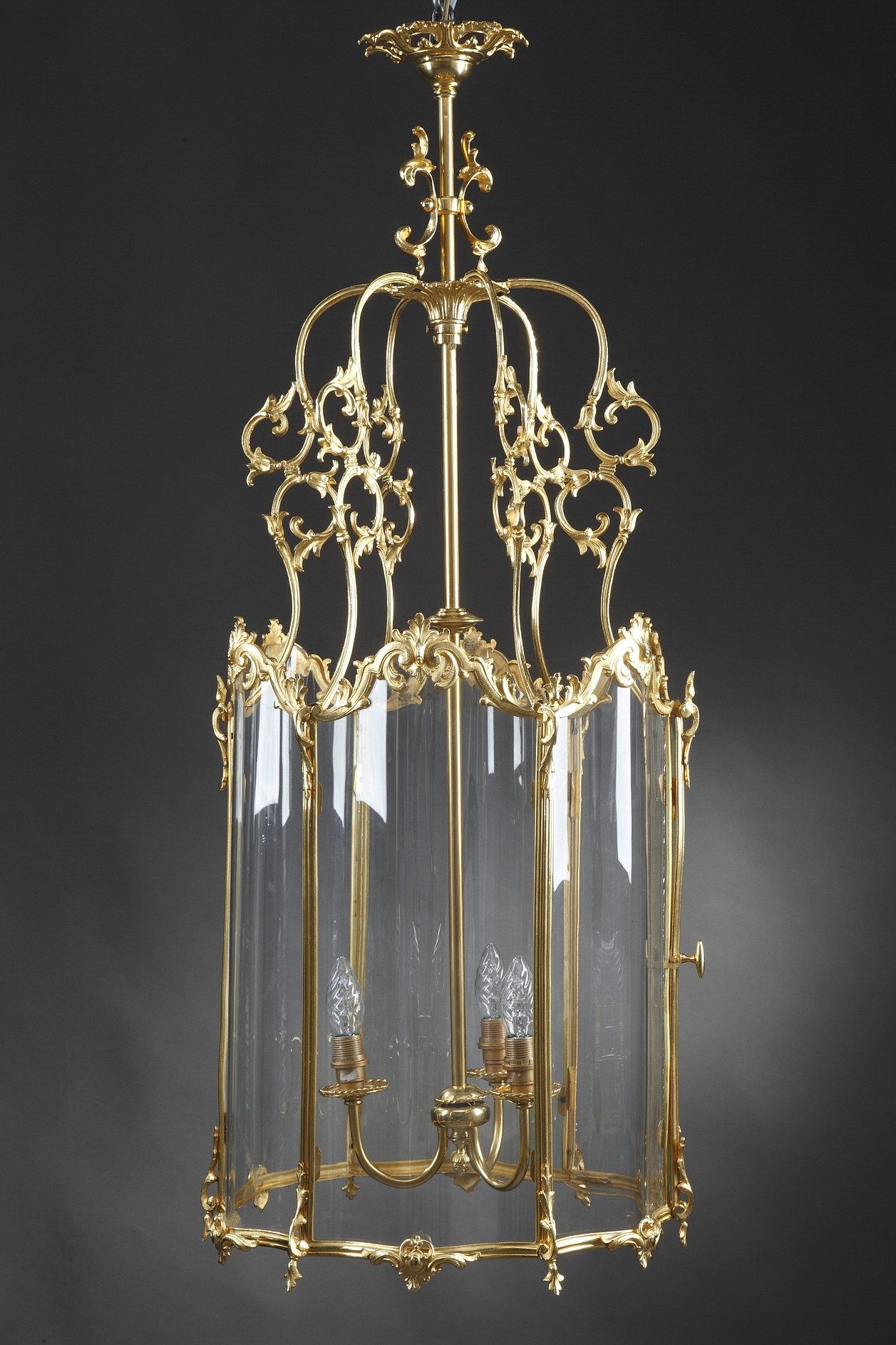
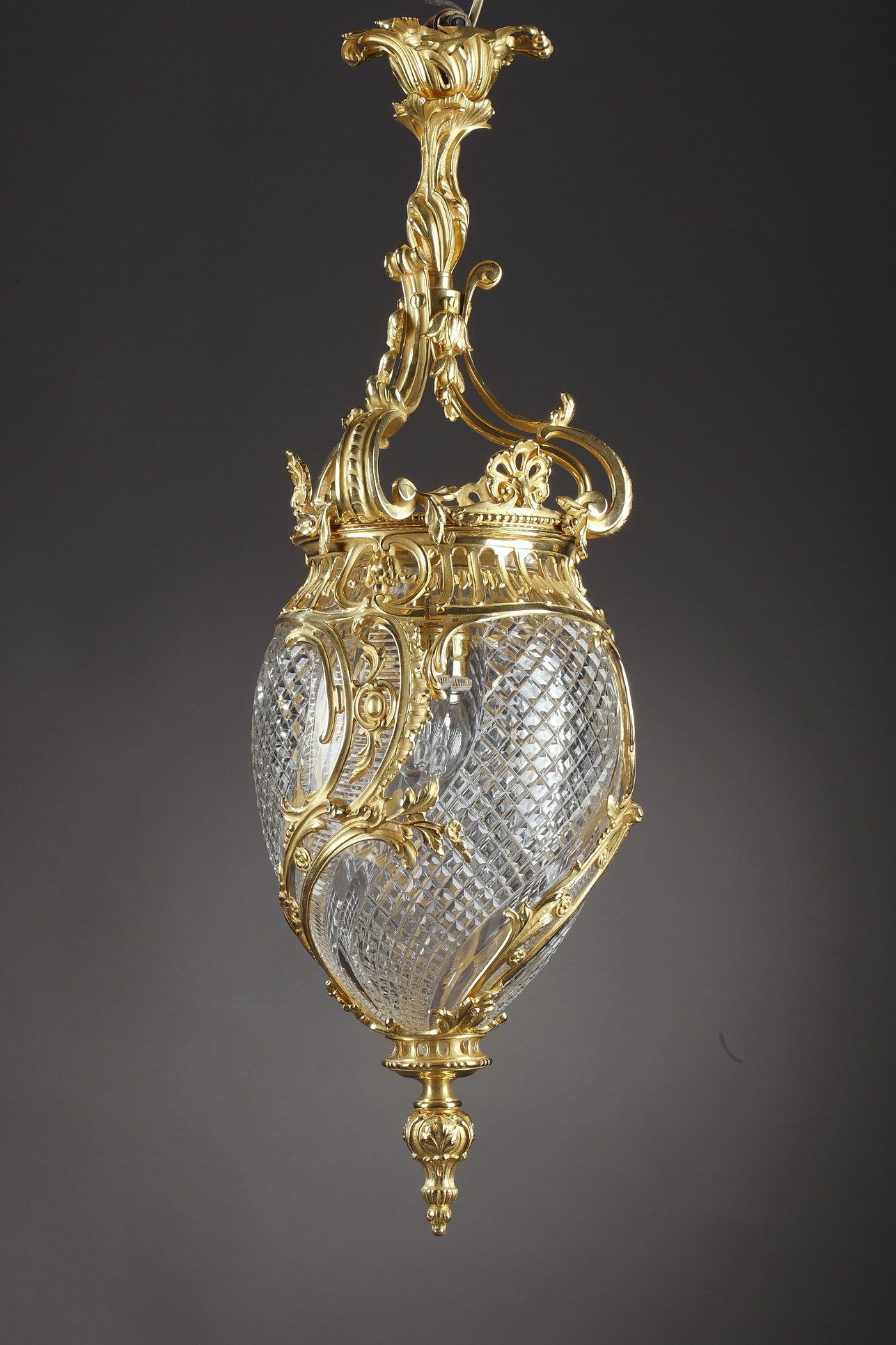 Louis XV-style ovoid lantern
Louis XV-style ovoid lantern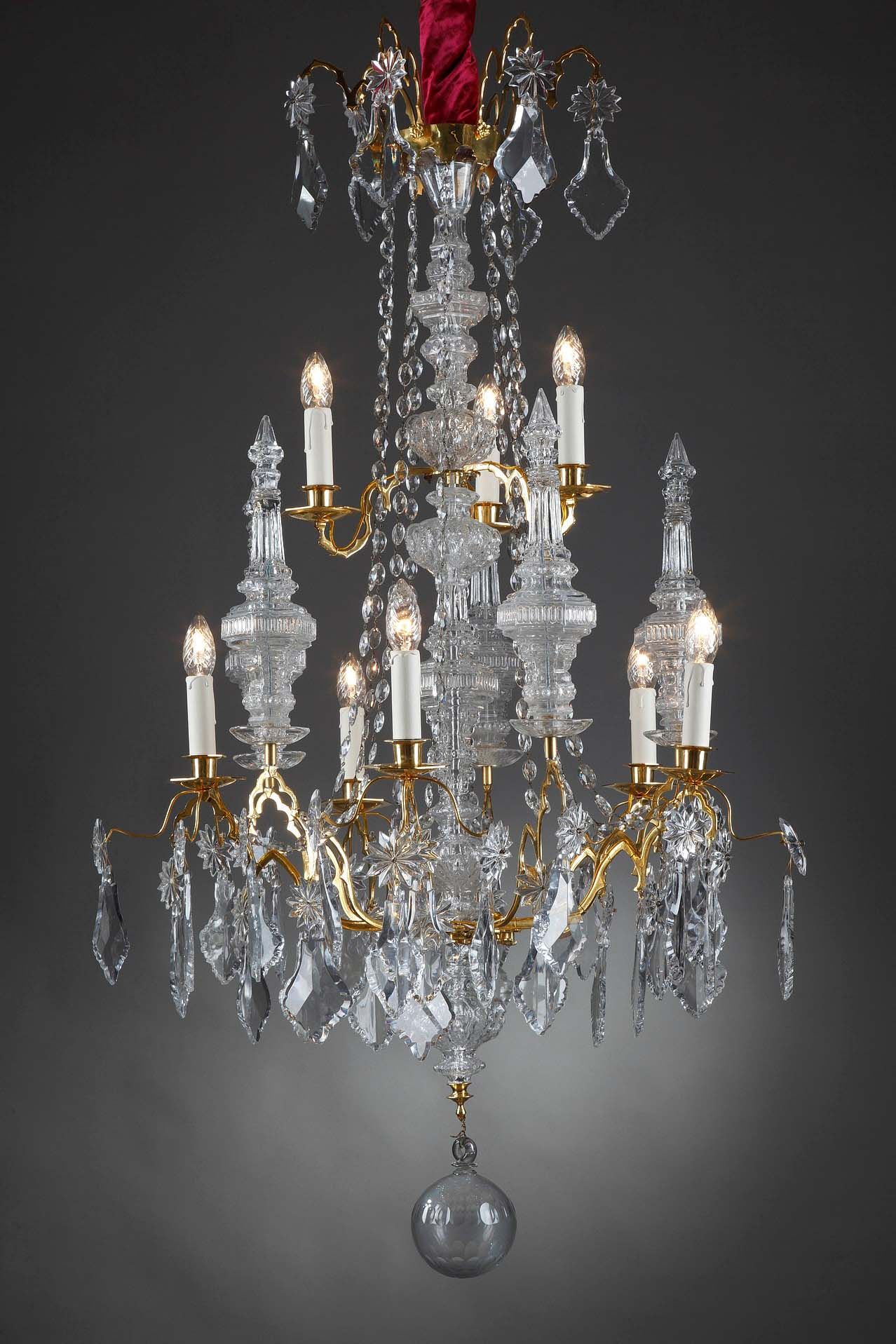 8-light crystal cage chandelier
8-light crystal cage chandelier 
